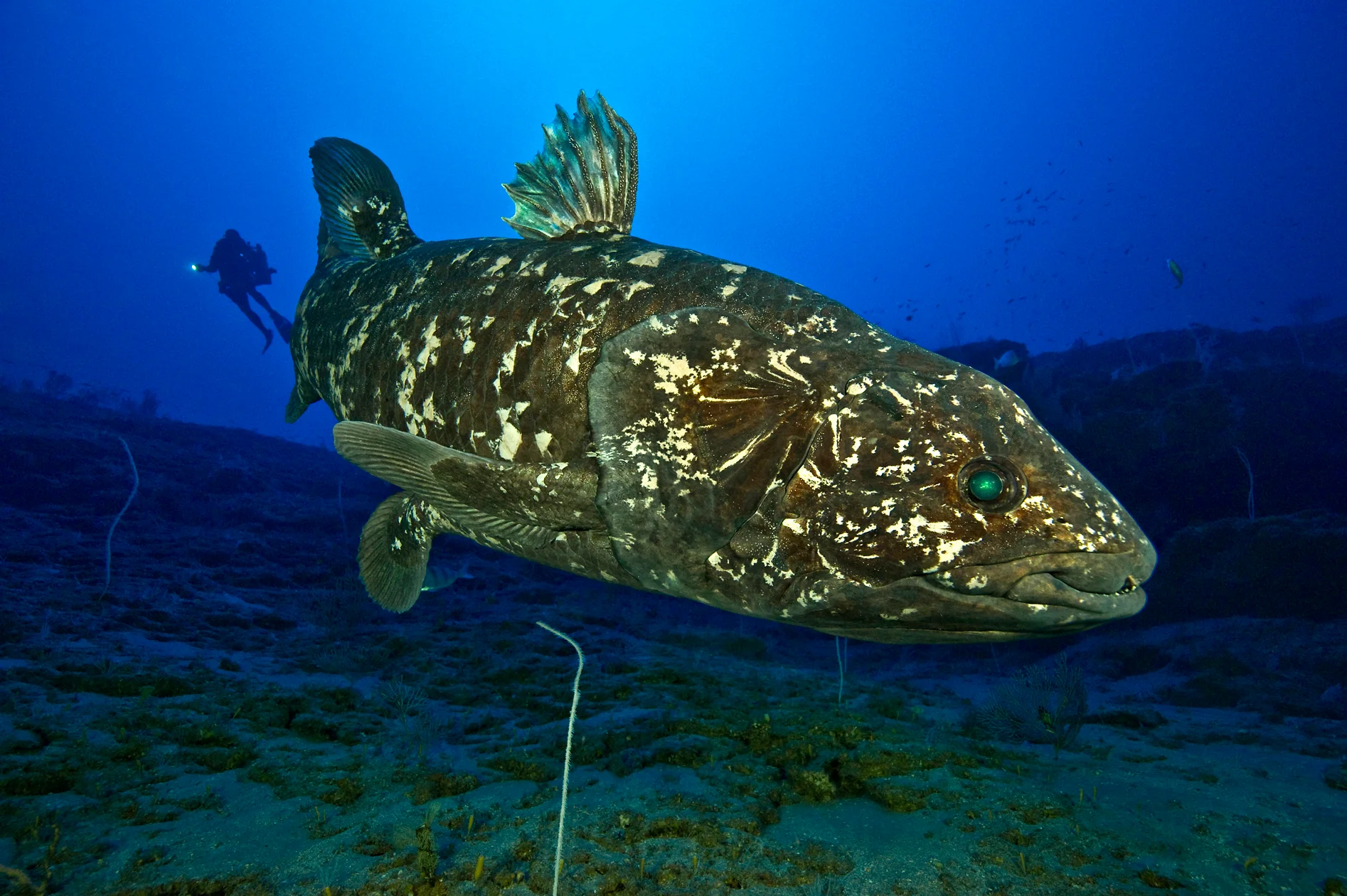- The coelacanth is a remarkable fish that was thought to be extinct until it was rediscovered in 1938 off the coast of South Africa. This ancient fish belongs to a group of lobe-finned fishes that have fleshy fins with bones and muscles, resembling the limbs of land animals. The coelacanth and its close relative, the Indonesian coelacanth, are the only living representatives of this group, which also includes the ancestors of tetrapods (four-limbed vertebrates).
- The coelacanth is a large and elusive fish that inhabits the deep waters of the Indian Ocean. It can grow up to 2 meters long and weigh up to 100 kilograms. It has a distinctive appearance, with a blue-gray body, large scales, and a lobed tail. It also has a unique feature: a hinged skull that allows it to open its mouth very wide and swallow large prey. It is a nocturnal hunter that feeds on fish, squid, and crustaceans. It uses its lobed fins to move slowly and stealthily through the water, sometimes resting on the seafloor or in caves.
- Its complex reproductive system that involves internal fertilization and live birth and female coelacanth can carry up to 26 embryos for more than a year before giving birth. The newborns are about 35 centimeters long and are fully independent from their parents with a long lifespan, estimated to be up to 60 years.
- The coelacanth is a rare and endangered species that faces many threats from human activities. Its habitat is vulnerable to pollution, overfishing, and climate change and estimated to be less than 500 individuals, distribution restricted to a few locations in South Africa, Mozambique, Tanzania, Comoros, Madagascar, and Indonesia.
- Protected by national and international laws the coelacanth is a valuable source of scientific information about the evolution of vertebrates and the diversity of life in the deep sea. It is important to conserve this living fossil for future generations.

